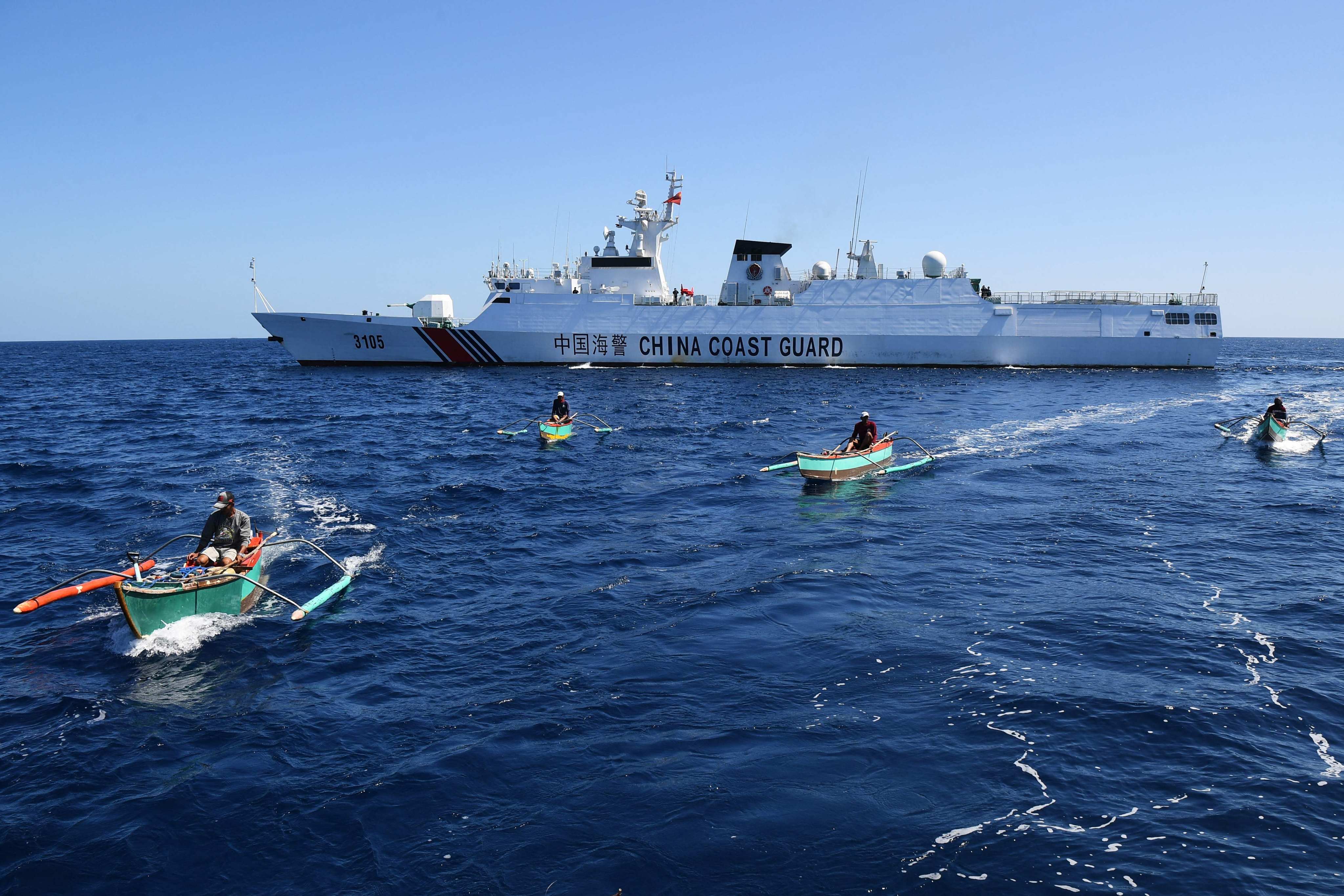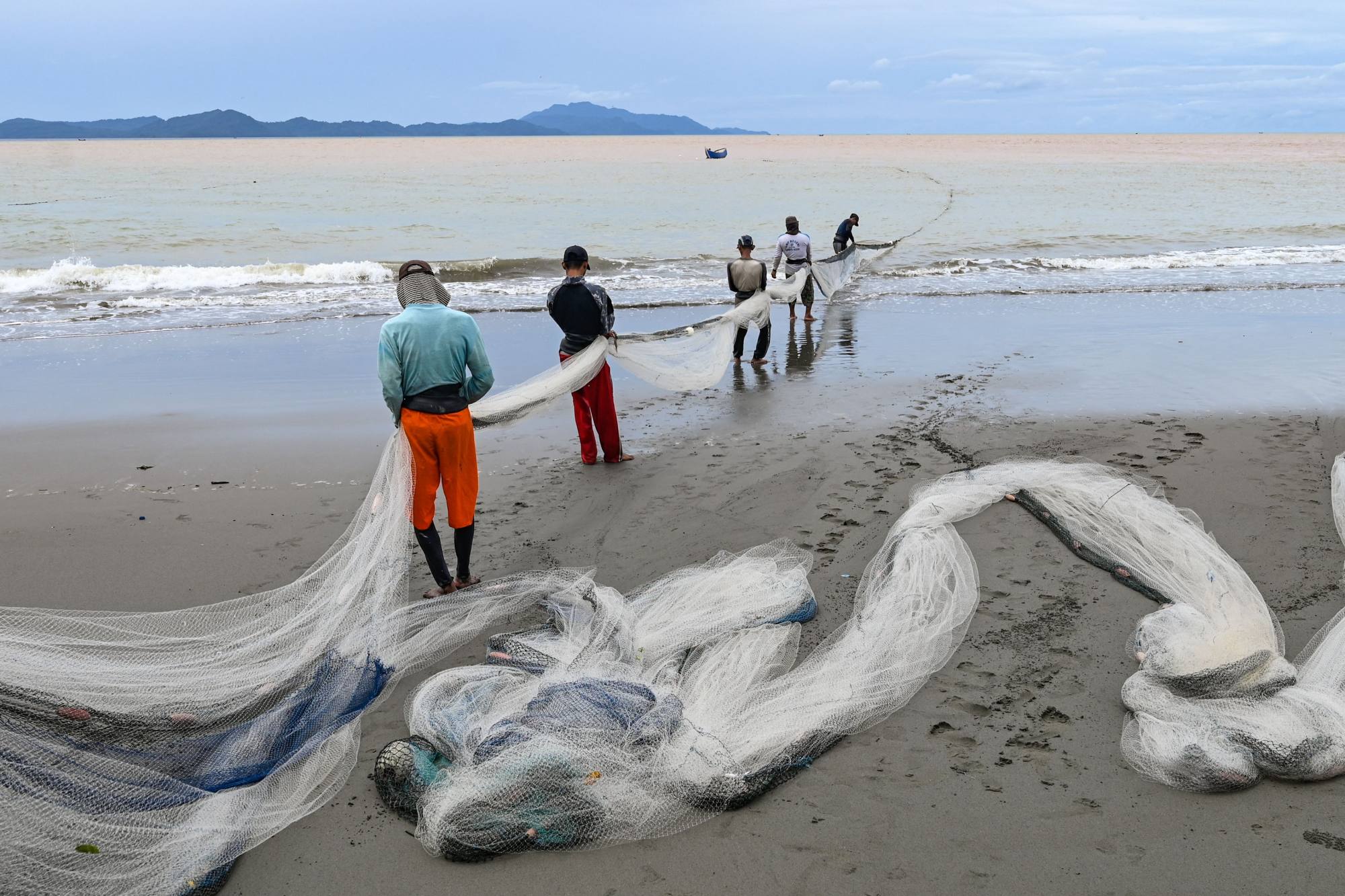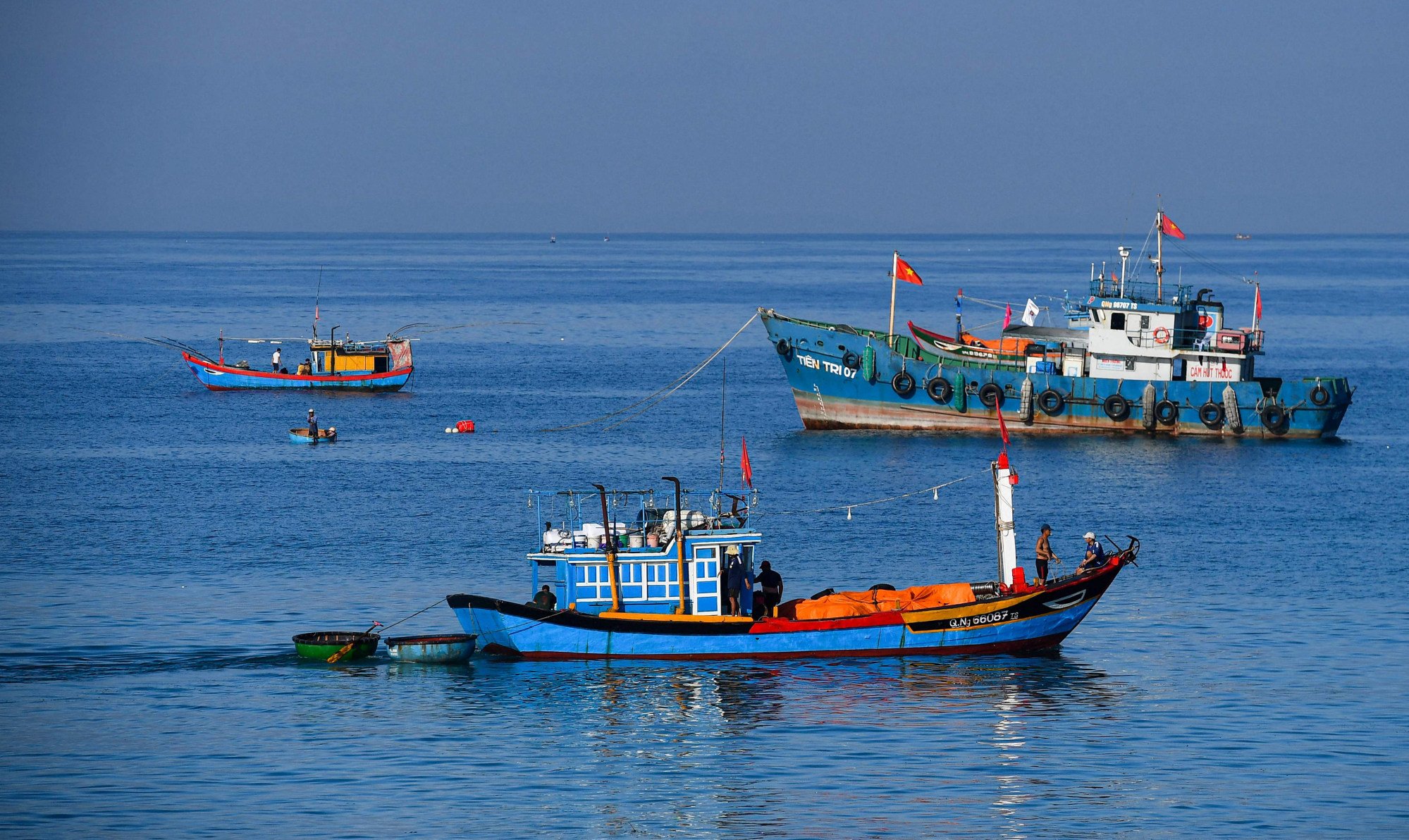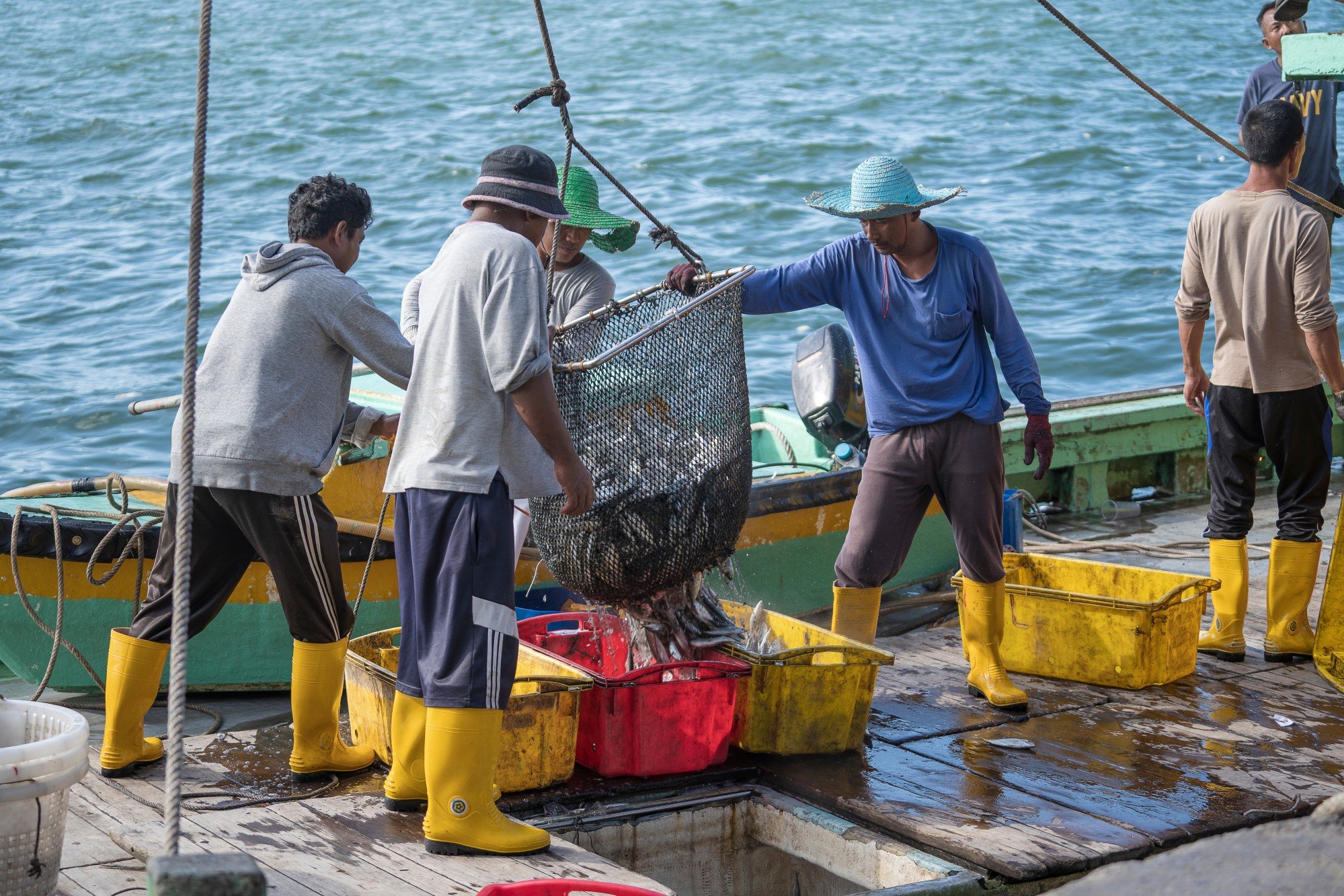South China Sea tensions ‘won’t stop’ Asean’s blue economy growth: official
Despite a senior Asean official’s confidence, observers warn ongoing disputes could impede sustainable growth and vital marine conservation

Southeast Asia’s plans to grow its blue economy – especially its fisheries sector – will not be hindered by tensions in the South China Sea, according to a senior Asean official, despite warnings from observers that ongoing maritime disputes with China could threaten the region’s economic and environmental progress.
Satvinder Singh, deputy secretary general of the Asean Economic Community, said disputes involving claimant states such as the Philippines and Vietnam would not hamper the bloc’s efforts to grow the industry as part of a broader push to become the world’s fourth-largest economy before 2045.
“Fisheries are one of the key sectors in the blue economy for the region,” Singh said at a Friday media briefing on the Asean Community Vision 2045 and the bloc’s coming economic strategic plan. “Those specific incidents that happen in the South China Sea are not going to stop the industry from progressing.”
The blue economy – which encompasses maritime industries such as fisheries, tourism, offshore energy and marine transport – is a key component of the Association of Southeast Asian Nations’ push for sustainable development. According to Singh, it sits alongside other major regional initiatives, including the Asean Strategy for Carbon Neutrality and frameworks focused on circular economies, agriculture, energy and transport.

Singh confirmed that the implementation plan for the Asean Blue Economy Framework, adopted in 2023, would be completed this year. The framework outlines regional cooperation on a sector projected by the United Nations Development Programme to generate US$3 trillion in economic value and 43 million jobs by the end of the decade.
“Within it, of course, the fishery sector is a core sector of development. But [alongside] fisheries, we’re also going to be targeting energy, transport, tourism, mining. All these are big components of blue economy,” Singh told This Week in Asia.
The fishery sector also was undergoing efforts to move into a “more circular and bio-friendly ecosystem” to grow its relevance and competitiveness, Singh added.
The Asean Economic Community Strategic Plan 2026-2030 – a six-goal plan with 44 objectives and 192 strategic measures – is being launched as a “building block” to reinforce agility and resilience against “external shocks” such as the widespread tariffs imposed by US President Donald Trump’s administration.
The blue economy is among 10 objectives listed under one of the plan’s strategic goals to shape Asean into a sustainable community. This includes accelerating the shift towards green and low-carbon economies and facilitating businesses’ transition towards sustainable practices to provide access to new markets.
Under the plan, Asean will develop initiatives – in alignment with the 1982 United Nations Convention on the Law of the Sea – to facilitate the management and conservation of marine and coastal resources for economic growth.
The plan comes days after the bloc launched the Asean Blue Carbon and Finance Profiling in partnership with Japan and the UN Development Programme in Indonesia, which aims to strengthen its technical capacity to assess carbon stocks and integrate blue carbon strategies into development plans across the region.
Reality check in disputed waters
However, some experts have warned that failure to address the geopolitical tensions in the South China Sea – where four Asean members have overlapping claims with China – could hinder the bloc’s blue economy ambitions.
“I agree that focusing on the blue economy is one way of getting every Asean member on board a common agenda,” said Julio Amador, interim president of the Foundation for the National Interest and founder of the policy advisory group FACTS Asia.
“But Asean has to find a way to get China to stop its unilateral fishing bans and prevent the China Coast Guard from attempting to enforce Chinese maritime laws – otherwise, the issue will become political.”
Tensions between China and the Philippines escalated in 2024, with several stand-offs between their maritime forces. The Philippines’ fisheries bureau last week slammed the Chinese coastguard’s “aggressive interference” and accused Beijing of firing a water cannon and sideswiping a government vessel during a research trip near the Spratly Islands.
Vietnam and the Philippines have also repeatedly filed protests against China for its annual fishing bans that last from May to September, arguing the moratorium violates their sovereignty as nations.

Dindo Manhit, president of the Manila-based think tank Stratbase-ADR Institute, cautioned against overlooking the challenges faced by claimant states.
“The recurring stand-offs and unilateral fishing bans in contested areas have disrupted traditional fishing routes and endangered the livelihoods of coastal communities. Geopolitical tensions, such as this, tend to aggravate overfishing, degrade marine ecosystems, and hinder efforts for regional collaboration in sustainable fisheries management and marine conservation,” he said.
According to Manhit, the blue economy generates substantial revenue for the bloc’s member states, but failure to strengthen the sector could mean missing out on key opportunities for economic growth.
“Marine renewable energy sources, such as offshore wind, have strong potential to reduce reliance on imported fossil fuels and support the region’s transition to cleaner energy systems,” he said.
Chester Cabalza, president of Manila-based International Development and Security Cooperation think tank, also expressed scepticism about the claim that South China Sea conflicts would not affect blue economy growth.
“It slows down the promise of big waves in elevating blue economy for many claimant states in the region since commercial and naval ships do not fully exercise freedom of navigation,” he said.

The South China Sea’s fishery sector supports more than 3.7 million direct jobs and sustains 119 million coastal livelihoods, generating over US$11 billion in fisheries export value in 2023, according to Sazlina Salleh, deputy director for the Centre for Policy Research at Universiti Sains Malaysia.
“As Asean contributes around 20 per cent of the global fisheries and aquaculture output, our original captured fish yields about 18 billion ton metrics of the global production. However, the health of this vital stock presents a complex and concerning picture,” Sazlina said.
Speaking at a maritime security dialogue in Manila on Thursday, Sazlina cited a study by Takashi Fritz Matuishi of Hokkaido University’s Faculty of Fisheries Sciences that found 43 per cent of Southeast Asia’s marine stocks were “underfished”, 3.6 times higher than the global average, while 33 per cent were classified as “overfished” compared to the global average of 37.7 per cent.
However, she stressed that fish stocks in the South China Sea were coming under pressure as it had become a hotspot for overfishing. According to the Stimson Centre think tank in the US, 26 per cent of the waterway’s fish stocks are classified as overexploited, while 21 per cent have collapsed.
Cabalza urged Asean to protect its collective waters to avoid depriving future generations “of their maritime sovereignty and bright future”.
“Coastal and naval defence are gargantuan tasks in making archipelagic and maritime states in Asean more united and prosperous,” Cabalza said.
Manhit also warned against inaction, which could lead to the overexploitation of marine resources and environmental degradation, weakening Asean’s ability to build climate resilience and compete in the global shift towards green and circular economies.
“Strengthening the blue economy is not just an environmental imperative – it’s a strategic move for long-term regional prosperity,” he said.